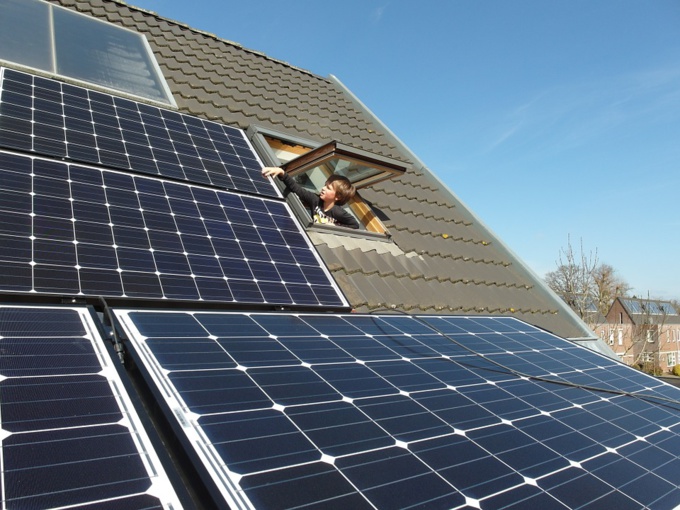The digital revolution, unmanned transport, cheaper renewable energy and cyclical production should fundamentally change the global picture of demand and supply of basic raw materials, say Global Institute McKinsey’s analysts in their report "Beyond the Supercycle: How Technology is reshaping resources". According to their calculations, the demand for oil and coal will reach a peak and will start declining by 2035.
The raw materials market has been going through the so-called super cycle during the last 15 years. in the early 2000s, rapid industrialization and urbanization in China generated an increased demand for natural resources. China's economy consumed half of iron ore and hard coal, as well as 40% of copper, in the world by 2015. In general, spending on natural resources exceeded 15% of world GDP in 15 years. However, commodity prices fell by 2015, causing another economic stress in the exporting countries.
The raw materials sector found itself on the verge of a new era in which demand and supply are shaped by the technology development. The fall in oil and gas prices affected state subsidies and investments in the industry. After 2008 their pace slowed, and hey fell by $ 215 billion, almost 0.3% of the world’s GDP, between 2014 and 2015. According to the report’s authors, all this will lead to the fact that by 2050 the energy intensity of the world economy will decrease by half.
When prices for fossil fuels began to decline in 2014, analysts assumed that this would entail a new economic boom in importing countries. In practice, however, growth remained low, as the financial crisis re-shaped consumer habits and made them think more about saving. The demographic trends have also changed: already now a number of countries is experiencing a "demographic deficit". In some cases, fertility is only maintaining constant number of people in the country, but does not provide growth. Number of deaths in some countries is exceeding number of births. This, in turn, changes attitudes toward people planning their future. People want to live longer, plan their future more thoroughly and tend to save more. For example, an average USA citizen spends 81 cents and puts aside one dollar. People are refuse current consumption in favor of the future, thus reducing demand for goods and services. McKinsey experts state that a new "economic miracle", comparable in scale with the Chinese, will not happen in the next 20 years.
Completion of the super cycle, however, did not stop either the digital revolution or the evolution of engines and energy in general. New rise of energy-saving technologies is fostered by international commitments to reduce carbon dioxide emissions. According to the Environmental Performance Index, compiled by Yale University in 2016, 69 developed countries are implementing energy and climate policies.
McKinsey’s report considers two scenarios: moderate and explosive development of technologies. Te researchers compare them with a "control" scenario, in which technologies remain at the level of 2016, but macroeconomic projections are implemented. In a moderate scenario, energy efficiency can increase by 2035 by 43%. On the other hand, accelerated development of technologies will cause the 70% growth of potential efficiency. Thus, the world economy can abandon 100 million terajoules of surplus energy, saving from $ 600 billion to $ 1.2 trillion. If we take into account savings on non-energy raw materials, such as iron ore and copper, the cumulative effect is estimated at $ 0.9-1.6 trillion.
Half of the energy consumed is spent on transport. Its future is determined by further increase in the efficiency of engines, as well as spread of electric and autonomous vehicles. In a moderate scenario, this will result in energy savings equivalent to $ 150 billion, and the accelerated development will expand the volume of savings to $ 280 billion. Internal combustion engines in passenger land transport over the past 35 years have become 20% more effective. Already by 2035, the economy will grow by another 40%, which is facilitated by toughening of requirements for passenger cars. Authors of the report expect that electric cars will significantly rise in popularity in the coming 20 years, which will reduce the demand for fossil fuels.
In the near future, automation of energy consumption in homes, offices and industrial facilities can save from 10% to 30% of cost of their heating and cooling. Lighting, which automatically turns off as soon as people leave the building, reduces energy costs by another 20-30%.
The industry will continue to implement solutions in the spheres of Internet of Things, sensors, control systems and analytics, which allow to optimize energy consumption, and also make the production process more flexible and safe. Opportunities for saving under a moderate scenario are $ 310 billion, while accelerated scenario promises $ 540 billion.
McKinsey especially notes the technology-related growth in productivity of the mining sector. In the next 20 years, companies will be able to reach new deposits, which until now have been unprofitable (the so-called slate breakthrough). Now, it is more efficient to develop old ones, and to reduce number of leaks. Potential benefits for moderate and accelerated scenarios for oil and gas production are estimated at $ 230 billion and $ 290 billion, respectively, and for coal, iron ore and copper - at $ 60 billion and $ 100 billion, respectively.
However, even with a decrease in equipment prices, such changes in the world energy balance will require at least $ 420 billion of investments in fixed assets, and energy prices will decrease. In addition, according to the International Renewable Energy Agency, energy stabilization will require energy storage with a total capacity of 150 GV, and intense training of employees, which also require investments.
source: mckinsey.com
The raw materials market has been going through the so-called super cycle during the last 15 years. in the early 2000s, rapid industrialization and urbanization in China generated an increased demand for natural resources. China's economy consumed half of iron ore and hard coal, as well as 40% of copper, in the world by 2015. In general, spending on natural resources exceeded 15% of world GDP in 15 years. However, commodity prices fell by 2015, causing another economic stress in the exporting countries.
The raw materials sector found itself on the verge of a new era in which demand and supply are shaped by the technology development. The fall in oil and gas prices affected state subsidies and investments in the industry. After 2008 their pace slowed, and hey fell by $ 215 billion, almost 0.3% of the world’s GDP, between 2014 and 2015. According to the report’s authors, all this will lead to the fact that by 2050 the energy intensity of the world economy will decrease by half.
When prices for fossil fuels began to decline in 2014, analysts assumed that this would entail a new economic boom in importing countries. In practice, however, growth remained low, as the financial crisis re-shaped consumer habits and made them think more about saving. The demographic trends have also changed: already now a number of countries is experiencing a "demographic deficit". In some cases, fertility is only maintaining constant number of people in the country, but does not provide growth. Number of deaths in some countries is exceeding number of births. This, in turn, changes attitudes toward people planning their future. People want to live longer, plan their future more thoroughly and tend to save more. For example, an average USA citizen spends 81 cents and puts aside one dollar. People are refuse current consumption in favor of the future, thus reducing demand for goods and services. McKinsey experts state that a new "economic miracle", comparable in scale with the Chinese, will not happen in the next 20 years.
Completion of the super cycle, however, did not stop either the digital revolution or the evolution of engines and energy in general. New rise of energy-saving technologies is fostered by international commitments to reduce carbon dioxide emissions. According to the Environmental Performance Index, compiled by Yale University in 2016, 69 developed countries are implementing energy and climate policies.
McKinsey’s report considers two scenarios: moderate and explosive development of technologies. Te researchers compare them with a "control" scenario, in which technologies remain at the level of 2016, but macroeconomic projections are implemented. In a moderate scenario, energy efficiency can increase by 2035 by 43%. On the other hand, accelerated development of technologies will cause the 70% growth of potential efficiency. Thus, the world economy can abandon 100 million terajoules of surplus energy, saving from $ 600 billion to $ 1.2 trillion. If we take into account savings on non-energy raw materials, such as iron ore and copper, the cumulative effect is estimated at $ 0.9-1.6 trillion.
Half of the energy consumed is spent on transport. Its future is determined by further increase in the efficiency of engines, as well as spread of electric and autonomous vehicles. In a moderate scenario, this will result in energy savings equivalent to $ 150 billion, and the accelerated development will expand the volume of savings to $ 280 billion. Internal combustion engines in passenger land transport over the past 35 years have become 20% more effective. Already by 2035, the economy will grow by another 40%, which is facilitated by toughening of requirements for passenger cars. Authors of the report expect that electric cars will significantly rise in popularity in the coming 20 years, which will reduce the demand for fossil fuels.
In the near future, automation of energy consumption in homes, offices and industrial facilities can save from 10% to 30% of cost of their heating and cooling. Lighting, which automatically turns off as soon as people leave the building, reduces energy costs by another 20-30%.
The industry will continue to implement solutions in the spheres of Internet of Things, sensors, control systems and analytics, which allow to optimize energy consumption, and also make the production process more flexible and safe. Opportunities for saving under a moderate scenario are $ 310 billion, while accelerated scenario promises $ 540 billion.
McKinsey especially notes the technology-related growth in productivity of the mining sector. In the next 20 years, companies will be able to reach new deposits, which until now have been unprofitable (the so-called slate breakthrough). Now, it is more efficient to develop old ones, and to reduce number of leaks. Potential benefits for moderate and accelerated scenarios for oil and gas production are estimated at $ 230 billion and $ 290 billion, respectively, and for coal, iron ore and copper - at $ 60 billion and $ 100 billion, respectively.
However, even with a decrease in equipment prices, such changes in the world energy balance will require at least $ 420 billion of investments in fixed assets, and energy prices will decrease. In addition, according to the International Renewable Energy Agency, energy stabilization will require energy storage with a total capacity of 150 GV, and intense training of employees, which also require investments.
source: mckinsey.com



















